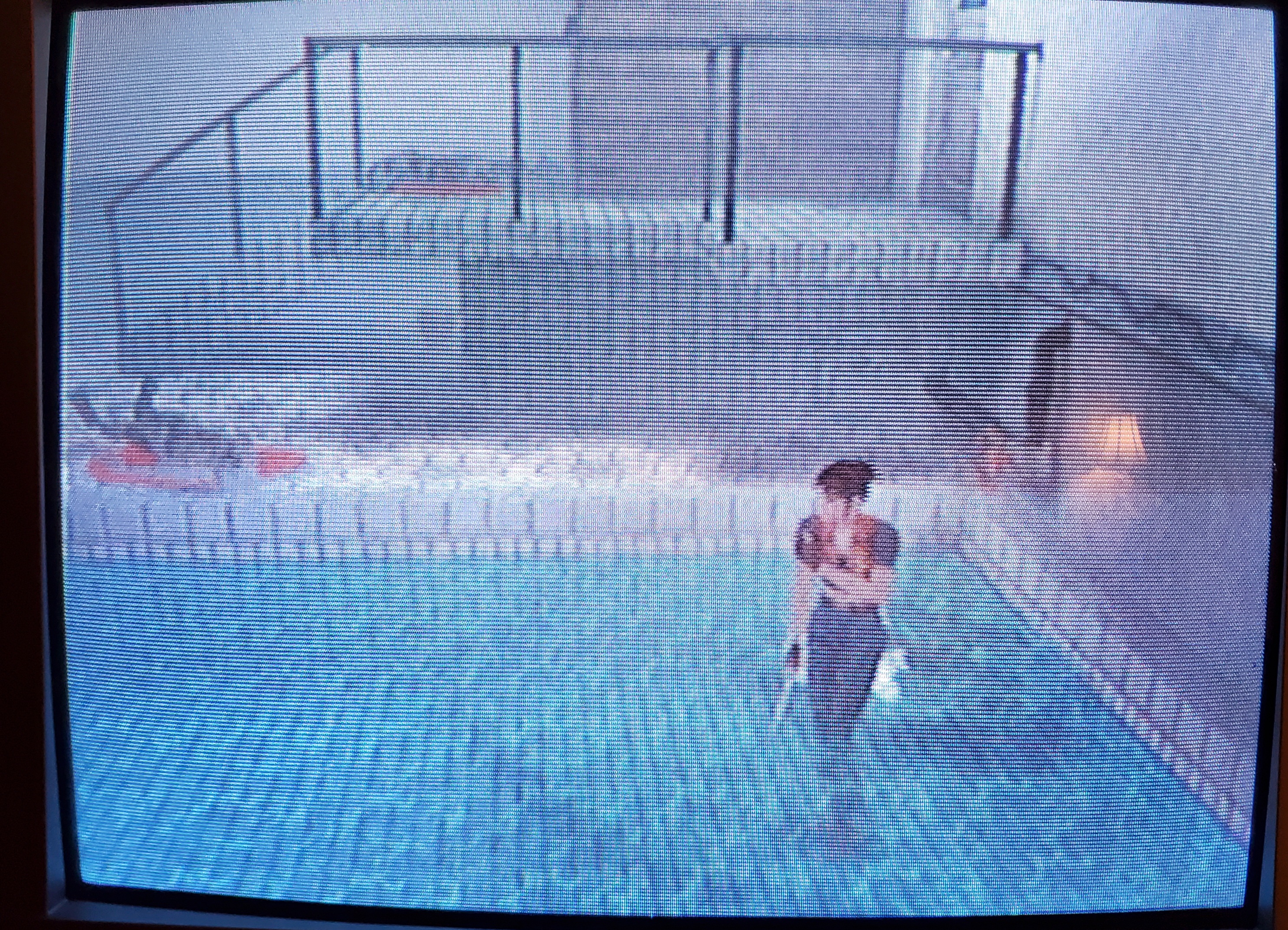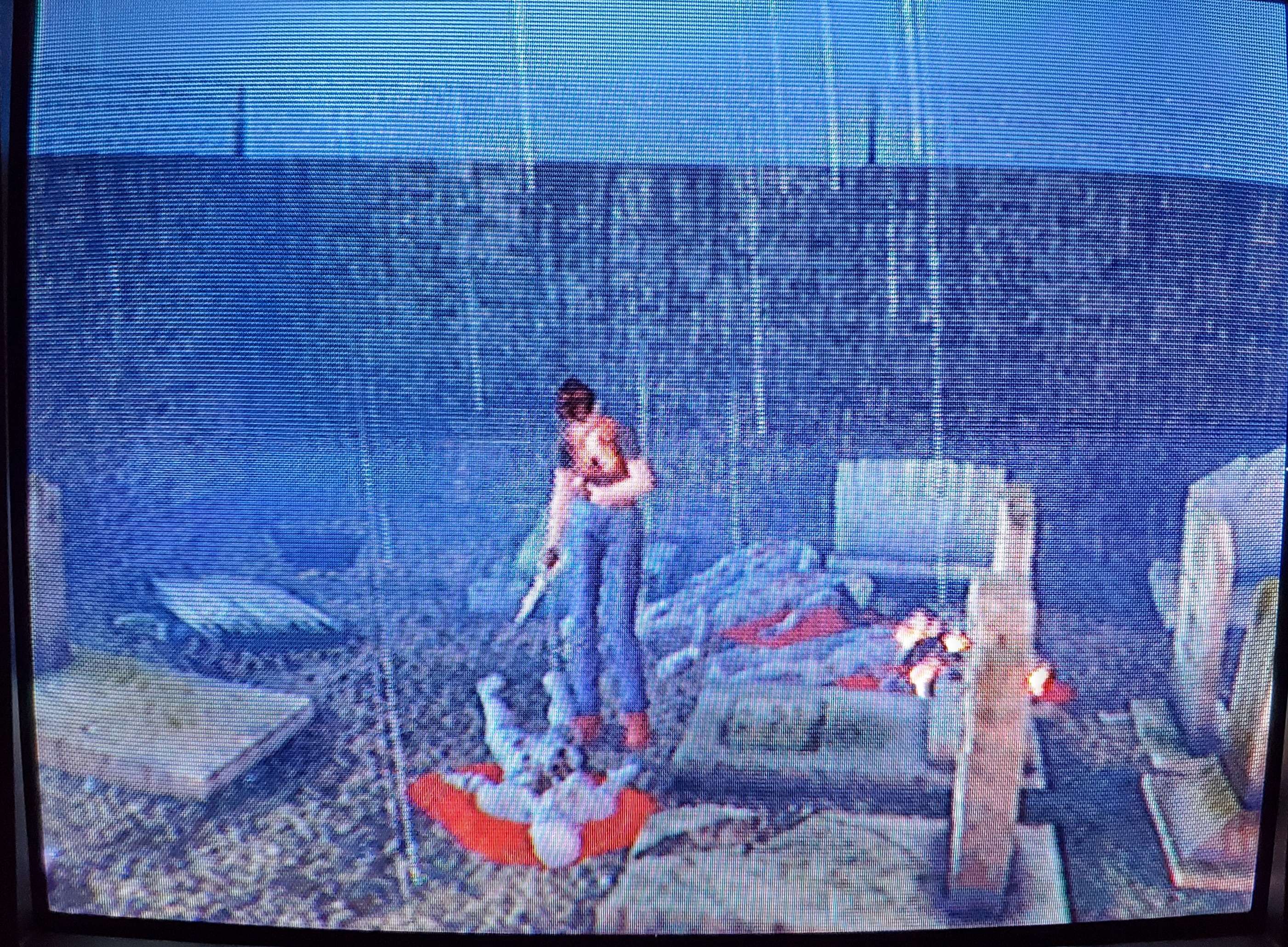
Cover art image sourced from Mobygames.com


- Platform: Dreamcast
- Developer: Capcom
- Genre: Survival Horror
- Year: 2000

I'm not usually a horror kind of guy, but Resident Evil: Code Veronica is one of those classic games that you're supposed to get for your Sega Dreamcast. I've never played a resident evil game before, so I've gone into this game knowing very little about the series other than the impact that it's had on the industry.
Keep in mind that I'm only a couple hours in, so there's a lot to this game that I haven't yet experienced.
Re:CV is incredible at keeping you on edge for most of the time. The game does this not only with the environment, but with gameplay elements as well. For example, you can't save whenever you please. There are savepoints located throughout the game (typewriters) that can only be used if you use the save currency (ink ribbons) which you have to find on your own.

This makes every action much more intense, as messing up means having to go all the way back to wherever you saved last. You also have to determine when a good point to save is, as you can only save a limited amount of times. You don't want to waste your save for insignificant progress.

The fear of losing your progress is as much a layer of Re:CV's wedding cake of atmosphere as the horrifying scenes that you'll encounter are. There was a truly terrifying moment where I was shambling towards the nearest save point on low health, and I got jumped by a horde of zombies with nothing but a knife. I managed to fight my way through (as the fear of losing half an hour of progress fueled my actions), and I couldn't be more relieved.

Nowhere feels safe in Re:CV. You know when you think "Oh, that dead guy is totally going to get up and jump scare me"? That does happen in this game, but not all the time. You end up feeling uncertain about every half-eaten corpse laying on the ground. Sometimes they'll get up and try to take a bite, but sometimes they'll just be dead.
Even places you've already been will hold new surprises for you. You'll pass through an area after everything is dead, but then when you backtrack through the same area some time later to do something else, enemies will break through nearby windows or already be there. This really adds to the whole active disaster thing that the game is trying to push.

The lack of indicators on screen also adds to the horror of Re:CV. No ammo counter, and no health bar. You can check these things in the inventory menu, but in the middle of a fight I find myself trying to remember how many rounds I had left in my magazine so that I can plan ahead. Claire also becomes visibly injured depending on your health.

Re:CV makes good use of the real world around you as well. On the Dreamcast VMU (a memory card with a screen plugged into the controller), your health status is displayed. If you have the Dreamcast Jump Pack (the vibration accessory for the controller) plugged in, your controller will vibrate depending on the situation (explosions, heartbeat, etc).

I feel that the controls need to be mentioned. They're weird, early-3D controls, but you do get used to it. The movement is tank-style controls. Left and right turn the player, and up moves you in the direction that you're facing. The inventory is a bit strange in terms of navigation as well, but once again, you do get used to it and the game does a decent job at teaching you how it works. Combat is probably the hardest thing to get the hang of, but it's really satisfying to pull off once you figure it out. This may sound like a bad thing, but the somewhat challenging controls adds to the terror of each encounter.
Resident Evil: Code Veronica is definitely worth picking up for the Dreamcast. It's my first entry into the survival horror genre, and it's made me a fan. If you don't have a Dreamcast, the game was ported to PS2 and GameCube following the console's demise as Code Veronica X. The PS2 release has also been ported to 7th gen systems and the PS4.
[September 2, 2021]

